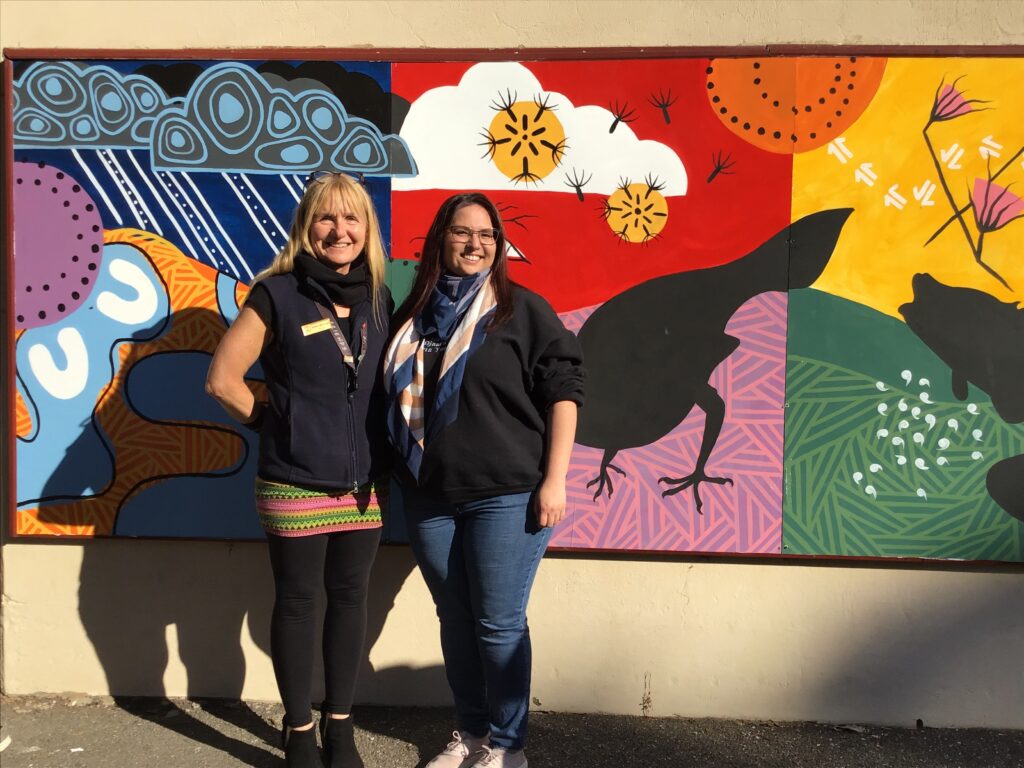June 8th, 2021Embracing the six seasons of our land
A TRADITIONAL smoking ceremony, community elders, a didgeridoo performance and a captivated audience of school children, set the scene for the unveiling of an amazing indigenous mural depicting the six main seasons of Djandak.
Created by local artist Natasha Carter, a Djaara, Yorta Yorta and Jaru woman, and inspired by parents who worked tirelessly to raise funds for the mural more than three years ago, the artwork at the Daylesford Primary School depicts the seasons of the Dja Dja Wurrung.

For Natasha, creating a mural to engage children to have a better understanding of the country’s indigenous past is something incredibly important.
“There are six panels, and each is focused on a season which will be a really good educational tool for the kids and the parents as well,” she said.
“A lot of my art is generally really colourful so I think that works well for a school environment while gaining kids’ interest at the same time.”
Initially Natasha intended to paint the mural on boards onsite at the school but Covid and lockdown changed those plans.
Natasha worked on the mural boards at her home and kept the school community up to date with photos capturing her work during each stage.
Natasha said she hoped the mural depicting the importance of the six seasons would be embraced by generations to come.
“From December to March is the milakuk and burramul time (lightning and emu time). This is the period when emus pair up and lay their eggs and once hatched it is the father who raises the baby emus,” she said.
Natasha explained ngaari (duck time) is the month of April and a time when ducks begin their courtship and nest making. April is also a time when the yam daisy (murnong) flowers and indicates when ngaari has begun.
“Wai-kalk time (golden wattle time) is from May to June and is a time when wattle bloom and when we can make our wooden tools and instruments such as the darnook (wooden bowl) and the datim-datim (the boomerang),” she said.
Next comes June to August and this is the wanyarra time (water time) when waterholes fill and creeks and rivers overflow.
From here we move to the lawan and murnong time from September through to October and it’s a time for collecting seeds. At this time the mallee fowl have laid their eggs.
The final season on the mural, the wirrap and giranul season, closes the cycle and from November to December it’s a time when the fish lay their eggs and kangaroo seed is available to harvest.
Daylesford Primary School acting principal Karen McHugh said the mural would be enjoyed by many generations of school children and the wider community.
“It’s only when we look back that we will realise the effort and the significance of this mural for future generations. Ceremony and traditions need to be taught to our children so they can remember and reflect. Remembrance can take your emotions to the next place of learning for future generations and as we look and absorb the mural, we know that it will bring joy to many,” she said.
Ms McHugh said the mural wouldn’t have been possible without support from the Hepburn Shire Council, the Rotary Club of Daylesford and many hours of work and organising by the school community.
“Pivotal to this was Karri Flood (parent/school councillor) who orchestrated the enthusiasm behind this event – hours of organising culminating in the amazing mural,” she said.
The mural is visible from the Vincent Street entrance of the school and can be viewed more closely when the school grounds are opened to the public once a month for the Rotary Market.
Daylesford Primary School acting principal Karen McHugh, left, and Aboriginal artist Natasha Carter with the mural
Words: Narelle Groenhout | Image: Grade 5/6 students Paula and Liam










